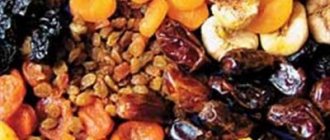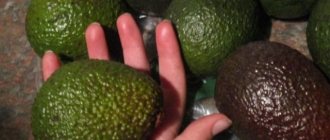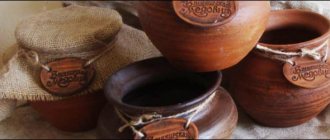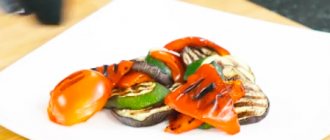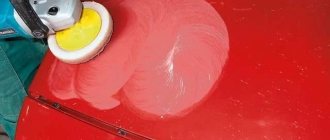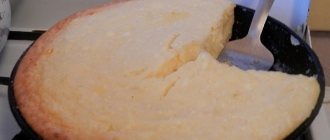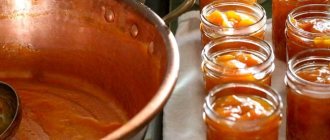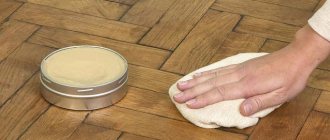It's August, which means it's time to collect young honey. In this regard, many decided to acquire new supplies of young honey. But we can’t always buy the “right” honey. How to choose the right honey?
Honey is a natural food and a good source of energy. Almost everyone has it on their table, especially those who follow an active lifestyle. In order to avoid buying a “honey product of unknown manufacture” during the purchase, it is worth knowing the intricacies of choosing this aromatic product. In our article we publish expert advice that will help you choose the “right” honey you need.
Good honey from the right bees: choose your treat wisely
Everyone knows that honey is an incredibly tasty and healthy product. Perhaps not everyone likes its sweetness, but honey should be in every home: it perfectly replaces sugar, treats many diseases, and is used in making baked goods and desserts. The summer months are the time for honey production, and this delicacy fills the shelves of markets and shops. And along with it, useless and even harmful counterfeits go hand in hand. Today we will tell you how to purchase a high-quality natural product and not become a victim of deception.
Where can you buy a quality product?
Many people prefer store-bought products, believing that the manufacturer goes through all stages of quality control before putting honey on sale. But this does not always happen, since some of them are unscrupulous and produce counterfeits.
To avoid this, buy the product only from a reliable company and carefully read the composition. Even with factory packaging, the container should not contain anything other than honey.
It is best to purchase beekeeping products directly from beekeepers or at fairs. Before purchasing, be sure to check the necessary documentation - a passport from the apiary and product analysis data from the laboratory.
Market or store: where the quality of the goods will be guaranteed?
Buying honey is not at all difficult. It is sold at the market, at special honey fairs, in supermarkets and even online stores. But you can correctly determine the quality of the product only if you check the honey right at the counter. Not every store (especially on the Internet) can provide you with such an opportunity. Honey is packaged, the packaging is sealed, and not every seller will want (or be able) to open it for you just as a sample.
Please note: honey extracted in large quantities (industrially) may be pre-melted before packaging. One-time heating is allowed at a temperature of no more than 40 degrees Celsius, otherwise the beneficial properties are completely lost and carcinogens are formed. Therefore, it is better to avoid purchasing honey in supermarkets and online stores.
- You can buy honey from the store, but choose honey that has been sourced locally. This may indicate that it was collected recently. If there is imported honey nearby at a low price, this is a reason to think about poor quality.
- You can buy really good honey at seasonal honey fairs. These events often have specialized mobile laboratories where you can test the quality of the product. Information about these fairs is always disseminated through the media.
- Ask the honey seller for his business card and check the times when he sells at this place. If you subsequently doubt the quality of the product, you can return it.
- It is best if you buy honey in the same place where you buy the rest of your food. Every seller knows that a casual buyer is unlikely to waste time returning goods, but a regular customer with a good opinion of the seller is worth his weight in gold!
Buy honey collected in your region, at a certain time and from trusted beekeepers
These are the simplest tips that will help you navigate the choice of honey. And now we will tell you in more detail what criteria to use to choose a quality product and identify a fake using improvised means.
Product quality indicators
There are several simple and effective ways to tell whether honey is real or not at home. To do this, you need to consider what criteria a high-quality beekeeping product must meet.
- Maturity - the product should be pumped out of the honeycombs only after they have been completely sealed by the bees.
- Weight – about 1500 g of natural honey is placed in a 1 liter jar. The weight of the counterfeit product will correspond to the container or be even less.
- The color of honey must correspond to the declared variety. A clover or acacia product cannot be dark, and a chestnut product cannot have light shades.
Important! It is best to buy good and pure The product sold in supermarkets is completely devoid of healing properties. To give it a marketable appearance, it is heated repeatedly, and the high temperature destroys all the beneficial substances contained in the product. That is why simply a sweet mass with an increased amount of glucose ends up in a jar.
How to check honey for quality
There are several signs by which you can initially check the quality of honey “by eye”. These are not 100% methods, but they will help you protect yourself from counterfeiting.
High-quality honey flows in a mound with folds that slowly spread
- Honey can only be liquid for a month after it is collected. This period lasts from the end of July to the end of September (sometimes varies depending on the type of honey). At the end of October, all honey thickens and crystallizes, except for heather and acacia honey, which have a slightly different composition. If in winter you are offered liquid honey at the market or in a store, then it is melted or diluted with glucose syrup.
- To check how natural liquid honey is, take it into a spoon and, lifting it, let it drain. High-quality honey flows slowly, like a thread, forming a slide that will gradually spread. Twist the spoon and real honey will form folds. If it flows quickly or scatters with splashes, this is a sure sign of a fake.
- If foam with gas bubbles appears on the surface of the honey, this means that fermentation processes have begun. Their reason is the water content in the product is more than 20%. Honey also ferments after poor-quality heating at too high temperatures, which destroy the structure of the substance. Natural, fresh honey, due to its bactericidal properties, does not ferment.
- Ask the seller to let you smell and taste the honey. It should have a fragrant aroma and characteristic taste characteristic of the plants from which it was collected. The absence of these characteristics indicates that the honey was produced artificially. The caramel flavor indicates exposure to high temperature.
- The quality of honey is difficult to determine by its color. A white product is not necessarily sugar. Dark brown - does not necessarily contain added molasses or sugar syrup. Sweet clover, acacia and fireweed honey are light-colored, and honeydew, cherry and buckwheat honey are dark brown. The colors of other varieties range from light yellow to dark amber.
How NOT to test honey
Using "genetic memory"
There is a myth that if honey is placed on a plate and cool water is poured over it, it will show a crystalline structure. Indeed, this trick allows you to see a characteristic pattern on the water, reminiscent of honeycomb cells, but this has nothing to do with proof of quality: a similar pattern of irregular hexagons will appear in you if you pour pure sugar syrup into a plate of water.
This trick is based on a physical phenomenon called “Benard cells”. Such cells are formed by almost any viscous substance if a temperature gradient is created in it. In the honey trick, a temperature gradient is created by warm (room temperature or air temperature on a hot summer day) honey and a layer of cold water.
-20%
196 rub. 244 rub.
Natural honey Potapych “Linden”, 250 g
0 reviews
-26%
295 rub. 398 rub.
Natural craft honey “Taiga healer” Berestov A.S., 260 g
1 review
-25%
375 rub. 500 rub.
Natural honey “Altaicvet Mountain” Berestov A.S., Favorites collection, 500 g
1 review
1365 rub.
Peroni gift set “Collection of flavors of 12 honeys”, 12 x 30 g
0 reviews
-15%
999 rub. 1175 rub.
Honey gift set, Casket 3x250 g (floral, linden buckwheat)
0 reviews
-20%
310 rub. 387 rub.
Natural honey Forest lands “Raznotravie”, 700 g
0 reviews
190 rub.
Honey caramel HoneyWay “Solid honey”, with menthol and eucalyptus, 30 g
0 reviews
3100 rub.
Honey LENiNCHAi “Zabrus”, with honeycomb particles, 1 kg
0 reviews
Even more offers on TEA.ru
By color
There is an opinion that good honey should only be yellow, and that too white or too dark is a sign of additives. We will disappoint you: this is also a myth. The color of honey can vary greatly depending on the variety. So, for example, heather, angelica or conifer by their nature must have a rich brown tint, while sweet clover, sainfoin or acacia can be very light, almost white after crystallization. Thus, only those buyers who are well versed in honey and know what shades it can be should focus on color.
The best way to buy natural, good honey is to use the services of trusted sellers. This could be a neighbor who has an apiary, or a store that simply commands respect, or a honey producer with certificates. As a rule, one or two tests allow you to understand how conscientious the supplier is.
Enjoy the shopping!
How to determine quality at home
Immaturity of honey can harm its quality and significantly reduce its shelf life. If the honey was pumped out earlier than expected, then the necessary biological processes have not yet completed. There will be no benefit from such a product, except perhaps sweetening the tea instead of sugar. And increased moisture content will add harm and cause fermentation.
Uneven crystallization will serve as evidence that you bought unripe honey. The lower part has already been candied, the upper part remains syrupy. Sometimes there is a separation in color: between the lower and upper parts there is a dark layer. If there are no signs of fermentation, you need to consume such honey as food as soon as possible: it will not be stored for long.
Some unscrupulous sellers add impurities to honey. This helps improve the appearance of the product and reduce its cost. For example, sand is added to increase weight, and gelatin is added to thicken. To speed up the crystallization of fake honey, add starch, chalk or flour to it.
- To determine mechanical impurities, place a little honey in a transparent glass, add distilled water and stir. Insoluble impurities will settle or float.
- Add a few drops of iodine to the solution of honey and water. If starch is present, the solution will turn blue.
- To determine the presence of gelatin, you will need a 50% tannin solution. It's not very easy to find, but it is possible. Mix a solution of honey and tannin 1:2. The gelatin will fall out in white flakes. Normal turbidity of the solution indicates good quality of the product.
There are many varieties of honey, and each has its own color, consistency and candied period.
But in this way you can check honey without leaving the counter. Take a blank piece of paper with you. Spread some honey on it and light it from below with a match or lighter. If the honey is adulterated, then the paper will begin to burn, and the product will begin to bubble and char, because sugar burns well. Otherwise, the fire will go out as soon as it reaches the honey, due to the high density of the product.
How to identify impurities in honey?
To determine various impurities in honey, the following methods are recommended. Pour water into a transparent jar, add one teaspoon of honey, stir - the honey will dissolve and an impurity will settle at the bottom.
In order to detect an admixture of flour or starch in honey, you need to pour 3-5 ml of an aqueous solution of honey (1:2) into a jar or glass and add 3-5 drops of Lugol's solution (or tincture of iodine). If honey contains flour or starch, the solution will turn blue.
An admixture of starch syrup (a mixture of cool water and starchy sugar) can be recognized by its appearance, stickiness and lack of crystallization. You can also mix one part of honey with 2-3 parts of distilled water, add a quarter of the volume of 96% alcohol and shake.
If the honey contains starch syrup, the solution will take on a milky color. After this solution settles, a transparent semi-liquid sticky mass (dextrin) will settle. If there is no impurity, the solution will remain transparent.
You can detect impurities of sugar (beet) molasses and ordinary sugar by adding a solution of silver nitrate (lapis) to a 5-10% solution of honey in water. If a white precipitate of silver chloride appears, this indicates the presence of an impurity. If there is no sediment, then the honey is pure.
There is another way: to 5 ml of a 20% solution of honey in distilled water, add 22.5 ml of methyl (wood) alcohol; when an abundant yellowish-white precipitate forms, it will become clear that the honey contains sugar syrup.
To detect the admixture of inverted sugar (grated honey) there is a rather complicated method: grind 5 g of honey with a small amount of ether (in which the breakdown products of fructose are dissolved), then filter the ether solution into a bowl, evaporate to dryness and add 2-3 drops of freshly prepared honey to the residue. % solution of resorcinol in concentrated hydrochloric acid (specific weight 1.125 g).
If the impurity turns orange (to cherry red), it means there is invert sugar.
An increased percentage of sucrose in honey, which can be determined in laboratory conditions, indicates its poor quality: in natural flower honey there is no more than 5% sucrose, no more than 10% in honeydew honey. The better the quality of natural honey, the less sucrose it contains. “Sugar” honey has its own organoleptic characteristics: the smell of old honeycombs, a bland, inexpressive taste, a liquid consistency (if it is fresh), and during long-term storage it becomes thick, sticky, and sticky.
“Sugar” honey (the bees were fed or fed with sugar), like all unnatural honeys, is characterized by the absence of vitamins, organic acids, protein and aromatic substances, and mineral salts. In sugar honey, the main element is silicon, and there are practically no other salts, there are only traces of them. In natural honey it’s the other way around.
If the honey does not crystallize, then we can assume that there is an admixture of potato molasses.
Advice!
In order to detect an admixture of honeydew honey, pour 1 part of an aqueous solution of honey (1:1) into a glass and add 2 parts of lime water, then heat the mixture to a boil. If brown flakes form and precipitate, this indicates the presence of an admixture of honeydew honey.
How to choose natural honey on the market
Everyone wants to treat themselves to a sweet treat, but not everyone understands how to choose honey. To begin with, before going to the market, you need to study specialized literature, which will describe the characteristics of the product, its varieties and features. After reading, it will be clear which variety is good and really suitable for purchase.
Visual assessment of the product
There are several proven methods that will help you visually evaluate the product and distinguish the right honey from a fake.
- The first thing you need to pay attention to when looking at your butt is what bee nectar is sold in. This product has oxidizing properties, so it should never be stored in metal containers. It should be plastic, glass or clay. It is imperative to pay attention to the cleanliness of the container; it must be clean and sterilized.
- The consistency of the product should be uniform, without impurities. If it contains clots of unknown origin, it is better to refuse to purchase this product. You should not purchase a product with particles of honeycombs and bee remains.
- Carefully inspect the bottom of the container; low-quality bee nectar may have crystallization particles there. It is important to know that a real and fresh product will not have the slightest sign of crystallization.
- The color of a fresh and natural delicacy should be light yellow. However, there are varieties that are dark brown or even green. As a rule, such varieties contain honeydew. The white color of the product indicates that the bees were fed or constantly fed with sugar; such a product does not have important beneficial properties.
Attention! Manufacturers of artificial honey often add granulated sugar or molasses to improve the taste. For thickness and suitable consistency, chalk, starch or sand are used; some even dare to add sawdust to the product.
Main types and varieties of honey
There are many types of honey, each of which has special differences and beneficial properties. The type of honey depends on the honey plant from which the bees collected pollen.
Main varieties of honey:
- Linden is one of the most valuable and useful varieties of light yellow color . Thanks to the high concentration of nutrients, it improves the condition of the digestive and hormonal systems, fights colds and fever.
- Buckwheat honey is a rich brown color with a high concentration of iron. Helps with anemia, impotence, vitamin deficiency. Chestnut has similar properties .
- Clover is one of the rarest varieties, which can be identified by its light, almost white color and creamy consistency. Effective for gynecological and nervous diseases.
- Acacia - transparent, light yellowish in color, with a liquid consistency. Due to its low glucose content, it is useful for diabetes and hypertension.
- Sweet clover – light, with a pleasant vanilla aroma. Improves the functioning of the heart, blood vessels and liver.
- Heather - has a beige-brown hue, crystallizes very quickly. It has an antiseptic, anti-inflammatory and mild diuretic effect.
No less common and useful are May honey, flower honey , herbs, and sunflower honey.
How to choose the right honey in a store: the main signs of a quality product
Those who want to buy bee products do not always have the opportunity to get to fairs and farmers' markets, so they are forced to go to stores to buy them. As a rule, it is impossible to try and test the product under such conditions. To buy this product you need to follow the following recommendations:
- high-quality and real honey is sold in transparent containers, through which it is possible to evaluate its texture and the presence of foreign impurities;
- store-bought honey always has a GOST sign on the label;
- It is imperative to check the information about the manufacturer and date of manufacture, it must be reliable and complete;
- the cost of the product also reflects its quality and naturalness; real bee nectar will not be cheap;
- the composition prescribed on the container should not contain glucose, sucrose and various additives in the form of taste enhancers.
After the choice has been made, but for some reason there are doubts about the quality of the product, you can conduct home experiments. They will help identify fakes or confirm the originality of honey.
Testing honey at home
Experts and beekeepers recommend using the following methods to identify a fake bee product.
- Take a clean paper sheet and drop honey on it. If the droplet spreads and the sheet gets wet, this indicates that it was diluted with water.
- Real honey, when taken with a spoon, will flow evenly, the stream will resemble a continuous thread.
- To test honey, use a chemical pencil. The tip of the slate should be moistened in honey and drawn on paper. If he starts writing blue, the honey has been diluted with water.
- To identify starch syrup in honey, you need to take a little water, drop honey and iodine into it; with starch, the solution will acquire a blue tint.
- Real honey will always completely dissolve in water; if the manufacturer has added any additives, then foreign sediment will appear at the bottom.
All of the methods listed are tested by experts, and they really work. This is also how our ancestors tested honey for quality.
Quality checking
In order not to be poisoned by honey from unscrupulous producers, it is important to know how to determine its quality at home. There are several simple ways based on the properties of the “correct” honey: Dissolution in water
Natural honey, dipped in hot water or tea, will quickly dissolve and leave no sediment. But at temperatures above +45 oC, the structure of honey disintegrates, as a result the product sticks to the walls of the glass and becomes carcinogenic. Therefore, you cannot add honey to boiling water.
Dissolution in water. Natural honey, dipped in hot water or tea, will quickly dissolve and leave no sediment. But at temperatures above +45 oC, the structure of honey disintegrates, as a result the product sticks to the walls of the glass and becomes carcinogenic. Therefore, you cannot add honey to boiling water.
Iodine test. The interaction of starch with iodine is a qualitative reaction to starch, thanks to which its content in products can be determined. It is enough to drop a little iodine into the honey and the appearance of a blue color will indicate the presence of starch.
Checking moisture content. A spoonful of honey should be poured onto a sheet of paper - if it is wet, then the moisture content in the substance exceeds 21%. A similar experiment can be carried out with bread - the crumb is placed in the thickness of the substance for 10-15 minutes. If during this time the bread has softened, it means the honey is watery.
Using a chemical pencil, you can check the moisture content in bee nectar before purchasing - just pour a thin layer of honey onto a piece of paper and run a chemical pencil over it. Purple stains on paper will appear only under diluted honey.
Heat treatment check. You need to heat a stainless steel teaspoon over the burner and then dip it into the honey. If a viscous mass sticks to the spoon, the product will change color or smell - the honey is not natural.
Checking for sugar and syrup content. You need to dilute a weak solution of honey in water (in the proportion honey : water = 1 : 2), then add ammonia. The appearance of a brown precipitate in the solution indicates the presence of unwanted impurities (syrups or molasses) in the delicacy.
To check the sugar content, you can dip a lapis pencil into the same solution - if a white precipitate appears, the honey contains an excess of sugars.
Check for chalk content. A solution of honey is diluted (see point 5), to which a few drops of vinegar are added. Cloudiness of the solution is a sure sign of the presence of chalk in the product.
All of the above are just basic ways to determine the quality of honey. To find out for sure whether the honey you bought is natural or not, you can watch a free video or film on this topic on the Internet.
Why is it important to choose real honey?
Most buyers purchase honey not only to enjoy it at a tea ceremony, but also to treat various diseases. Purchasing real honey will help quickly alleviate the patient’s condition. If you mistakenly chose low-quality honey with additives, then it is best not to use such a “delicacy” for medicinal purposes, so as not to harm the body even more.
How to identify natural honey
It is necessary to initially prepare theoretically for the correct choice. You definitely need to study the specifics of each variety and understand for yourself what kind of honey is needed.
Bee nectar can provide the following healing properties:
- regulate blood sugar and hemoglobin levels;
- activate immune cells in the body;
- improve the functioning of the gastrointestinal tract;
- heal wounds and burns;
- remove toxic substances from the entire body;
- strengthen vascular walls;
- relieve cough;
- relieve stress;
- normalize the functioning of the cardiac system.
Interesting! In ancient times, honey was a very valuable product, it was even equated to money, paying duties and debts. It was also given as a dowry during the wedding ceremony.
The most valuable is honey that was collected in the forest area. It contains a large list of useful components that have a beneficial effect on the human body. In addition to its medicinal properties, bee nectar is actively used in cosmetology. Today, cosmetics manufacturers very often add it to their skin care products.
Buying cheap treats can not only result in allergic reactions, but also negatively affect the treatment process. Beekeeping is a very complex process, so real bee nectar will never be cheap. You can ask any professional beekeeper how to choose the right quality honey; he will be happy to tell you and show you with an example.
Clear signs of low-quality honey
A low-quality product can be recognized by visual inspection. How to identify real honey when purchasing – pay attention to its absolute transparency and amber luster. This is a sign that it was susceptible to heat. Also, you should not buy honey that is dull white in color - it indicates added sugar .
Important! It is best to choose only honey in glass containers. A product that is sold in plastic, galvanized or tin containers will not bring any benefit to the body, since the active substances of honey react with such materials.
Why is it important to choose real honey?
Honey is not such a tricky item if you learn to choose it correctly. The quality of a bee product is the key to its healing properties. Especially quality cannot be neglected when treating with honey!
Only honey collected and produced under natural conditions can be called natural. Abrupt human intervention in the work of bees and in the composition of honey is unacceptable!
Good honey is characterized by a high diastase number. That is, it has pronounced medicinal properties, is quickly absorbed and is considered truly useful!
Honey must be mature. Bees spend a week working on nectar: evaporating moisture, enriching it with enzymes, and breaking down sugars. They seal the finished product with wax caps. This honey is healthy and can be stored for a long time. When an unscrupulous beekeeper pumps out honey earlier, the bees have time to get new ones. More unripe honey is produced in the same time. However, it contains a lot of water and spoils quickly. Therefore, choosing honey in combs is very simple. A frame sealed from bar to bar is a sign of finished honey!
Checking the product by external signs
The authenticity of honey can be checked not only at home, but also when choosing a beekeeping product. To do this, it is enough to know what the right product looks like, what shade it has, viscosity and consistency.
Taste
How to determine the quality of honey at home - first of all, you need to try it. The natural product tastes sweet, slightly tart, and causes a slight sore throat.
An artificial product may have a too sweet, cloying taste or hints of bitterness and sourness. If honey is heated repeatedly, it develops a characteristic caramel flavor.
Color and shade
To know how to distinguish natural honey from fake honey at home, you need to take into account that its color depends on the variety. All types of honey are different - the product can be light yellow, amber, brown-chocolate and almost white. But it can always be recognized by its ideal purity and transparency.
Important! Bad honey has sediment and a cloudy consistency. If it is dull white, this indicates the presence of sugar in the composition. Light-colored grains in a fake product are particles of starch or chalk that have not dissolved.
Consistency
Natural honey can be distinguished by its homogeneous, creamy, delicate consistency. If you put a drop of this sweetness on your hand and rub it, it will be completely absorbed. A fake will leave grains and small lumps.
In the summer, immediately after pumping out, honey has a liquid, elastic consistency, but by winter it should be candied . If, when purchasing in winter, you see a liquid product, this is a sure sign that it was heated to give it an attractive appearance.
Viscosity
To identify fake honey, take some with a spoon. Natural nectar flows down in an elastic stream and creates a slowly spreading slide.
If the stream is interrupted, you can see the so-called “spring effect” - the drop is pulled towards the spoon, forms a clot and begins to flow slowly. The sugar product will flow out in separate, intermittent drops.
Aroma
Natural honey is easily identified by its characteristic aroma. Bees collect it from the nectar of herbs and flowers, so the real product is always very fragrant. However, the smell is not strong.
Important! Counterfeit can be identified by the almost complete absence of aroma, because most often it is diluted with sugar, flour or starch, and such additives have no odor.
How to choose natural honey: general recommendations
On the counter you may come across a product that is incompatible with quality standards or that is falsified. To choose good honey on the market, follow these simple tips:
- Buy honey from trusted sellers with a known reputation.
- The packaging must be neat, airtight, and not leak. It is best to buy the amber delicacy in glass or ceramic containers
. But in metal containers, honey oxidizes, its taste and aroma deteriorate, and the reaction products can be hazardous to health. - On the packaging, look for the name of the manufacturer and its legal address, the place and date of honey collection, GOST, and quality certificate numbers.
- If you have the opportunity to try honey, do so. The taste of real honey corresponds to the declared variety. It varies from soft caramel (like acacia) to tart-astringent (like buckwheat) without sourness. Some varieties can even cause a sore throat.
- Smell the honey. The smell of high-quality honey is fresh and floral
without signs of souring, smoke or fermentation. - Buy honey that comes from strong honey-bearing plants. Bees do not collect “rosehip”, “hawthorn” and “strawberry” honey. These plants are more likely to be pollen-bearing.
- Do not buy honey if it contains sugar.
- Correlate the volume and weight of the product: 1 liter of mature honey weighs at least 1.4-1.5 kg. Unripe honey is much lighter. When weighing, do not forget to take into account the tare weight.
- Try rubbing a drop of honey with your fingers. A high-quality product is well absorbed into the skin and has no lumps
. Please note that 2 months after pumping, honey crystallizes. The presence of crystals in honey does not indicate its poor quality. - Don't buy cheap honey. Beekeeping is a very labor-intensive process, and an apiary requires considerable investment. And the product itself, containing up to 500 different vital elements and compounds, cannot be cheap.
How to distinguish good honey from fakes
- Taste.
It should be somewhat astringent and cloying. How to choose natural honey to taste? It has a pronounced specificity. Linden is somewhat more delicate, sunflower or buckwheat are especially bright and clear. Fake honey or honey collected from sugar syrup tastes like banal sugar syrup. As a rule, they do not cause the slight burning sensation on the tongue that is characteristic of a natural product. - By smell.
Same with the smell. How to choose quality honey on the market? Smell it! Any natural product has a specific aroma, even when thickened. And sugar syrups have almost no smell. - By general consistency.
It is most easily identified by rubbing a drop of the sweet treat between your fingers. How to choose natural honey? It will be easily rubbed evenly and absorbed into the skin. The counterfeit most often forms clots and lumps that are easily felt by the fingers.Very often, when choosing honey at the market or from hand, it is possible to evaluate its consistency by dipping a stick or spoon into it. “Correct” honey, when poured from a spoon, will form a thin thread, and on the surface of the main mass it will accumulate in the form of a pagoda, which will gradually spread. The fake, as a rule, drips from the spoon and immediately falls into the main volume.
- By color. How to choose the right honey by color? This sign is the most difficult. Thus, some types of honey can very easily be confused with “sugar” honey because of their lightness. However, honey made from sugar usually gives the impression of being too white. In addition, natural honey is always quite homogeneous and transparent, while fake honey usually has clearly visible turbidity and a small sediment at the bottom.
But even knowing how to choose natural honey based on these characteristics, it is better not to rush and take selected samples in the smallest quantities - a mayonnaise jar, for example. And already work magic on them at home. For example, there are good methods for assessing the presence of certain additives in honey.
Storing honey product
In order not to spoil on your own a good and high-quality product purchased or created in your own apiary, you should pay attention to its proper storage.
- Do not store honey in metal containers. It's better to take a glass or porcelain container.
- Heating honey above 39 degrees is unacceptable. Also remember this when adding honey to hot tea - it is better to wait until it cools down.
- Try not to keep the product in large volumes; it is better to buy fresh from time to time.
Only by conscientiously choosing an amber product and wisely approaching its storage, you can be sure that with every spoonful of sweetness you receive a whole complex of vitamins and minerals.
What kind of fake could it be?
Honey is divided not only into natural and artificial. There are other types of fakes, falsifications and simply low-quality products that not only lack beneficial properties, but may also turn out to be real poison.
- A low-quality product is what happens if the beekeeper does not carefully monitor the quality of life of bees, flower fields, or is unscrupulous in storing the product itself. In this case, it can be created from the nectar of flowers that are treated with pesticides or bees can be fed with sugar syrup. If the honey in the combs is not yet ripe, but it has already been pumped out, then this will also spoil its quality. This can also include excessively long storage - more than 2 - 3 years, when it becomes heavily candied and in order to transfer it to another container, it will be heated too much. Here there is a danger of the appearance of carcinogens, which take the place of beneficial substances in the honey product - when heated above 39 degrees.
- The artificial product is not prepared with the help of bees at all - it can be variations of decoctions of sugar and some flowers. There will be no benefit in such a product, and only a dishonest seller can call it honey.
- To improve the visibility of the quality of the product and increase its volume, many unscrupulous manufacturers perform the following procedures - they add various impurities in the form of flour, starch, sugar, water, etc. At the same time, honey, which may not even be of high quality, is counterfeited as a very expensive version. They can also sell products with the addition of royal jelly, propolis, pollen, etc., in order to increase the price of the product. In fact, such a product will contain various ingredients that will be either of the lowest quality or will not exist at all. You will no longer be able to check this. Therefore, if you want to get amber sweetness with additives of other bee products, it is better to purchase them separately and mix them yourself.
What information about honey does a buyer need to know?
Before buying honey, the client needs to familiarize himself with basic information about the delicacy:
- The product is considered a medical product. That is why you need to be careful when purchasing it. But where can you buy honey? It is best to find a quality supplier who does not add water or starch to the food product, and try to cooperate with the beekeeper on an ongoing basis.
- The most useful delicacy is considered to be linden, motherwort, buckwheat, flower, May, rapeseed, and sunflower honey. Each type has its own properties and advantages.
- Buy mature honey. It should be pumped out after the honey plant has flowered, not before. If you purchase a product earlier, it may turn sour and disappear.
- Don't know how to distinguish natural honey or not? See if it contains particles of wax, pollen or propolis. If you notice small grains, then you can rest assured that the product is artificial.
- Crystallization of honey indicates that it is natural. A food product cannot be liquid all the time; sooner or later it will begin to thicken. Remember that crystallization does not affect the properties of honey in any way.
- Farmers claim that the product has an unlimited shelf life. However, over time, it may lose its properties and become less useful.
If you do not know how to understand that honey is natural, then it is better to contact a professional. Perhaps someone you know knows how to spot a fake. Thus, you will definitely not go wrong and will purchase quality products.
However, despite the fact that honey has many positive characteristics, you should not eat it in large quantities. Often, due to an overabundance, a food product can cause an allergic reaction.
© Mulyukov S.G., author of articles, director of Bashkir Apiaries + LLC, 2021, https://www.facebook.com/sergey.mulyukov
Share link:
What is it, fake honey?
Artificial honey is most often a solution of water with sugar, fortified with, for example, dyes, flavors, glucose-fructose syrup, potato or beet syrup, molasses and preservatives.
A brewery that is about 5,000 years old was found in Egypt: photo
Japan will have a new minister of loneliness
Soft, warm, human-sized: a robot that will hug you if you're sad
To maintain a liquid consistency for a long time, synthetic honey is diluted in water and heated many times. It also happens that the process of falsification of honey occurs at the stage of its formation. To do this, beekeepers, for example, feed the bees sugar.
This fake honey does not have the properties attributed to real honey, and it is very high in calories. Moreover, the artificial substances in the composition make it harmful to the human body.
How is honey adulterated?
Most often, the seller uses primitive methods of falsifying honey - diluting it with water, chalk, flour, starch, or selling an unripe, synthetic product. How to recognize the type of counterfeit:
- Synthetic processing method. To do this, take inverted sugar syrup (in extreme cases, molasses). Dyes, flavors and much more are artificially introduced into them, making it difficult for a non-specialist to distinguish them from real honey by external signs. Most often found in factory products. If the manufacturer is responsible, he must indicate this on the packaging.
- Dilution method. Sellers add regular water to honey to increase its volume. This does no harm, but not everyone wants to pay for a cheap product. In addition, such products are not stored for a long time. It is much worse if the additive is inverted sugar syrup, since it consists of glucose and fructose. Such a product will never become candied. Another option is to dilute fresh honey with last year’s or older honey. To do this, it is heated at a temperature of 80°C, which completely destroys the beneficial properties and promotes the formation of hydroxymethylfurfural (harmful aldehyde).
- The honey is unripe. It was collected too early - before the bees evaporated the moisture and sealed the nectar in the honeycombs (only then does it ripen). This honey contains from 40 to 70% water (the permissible norm is 21%). This is fraught with the fermentation process, which produces toxic substances, which leads to intoxication of the body.
There are beekeepers who do not hesitate to sell honey after sick bees. These diseases are not transmitted to people, but the chemicals used to treat insects remain in honey products, which is harmful to health.
All methods of counterfeiting honey use chalk, starch, and flour to thicken it. There have been cases when crushed sand was used for this. Be vigilant, pay attention to every little thing.
